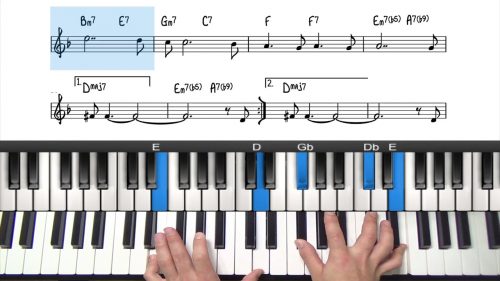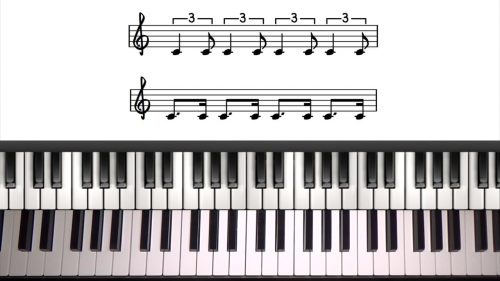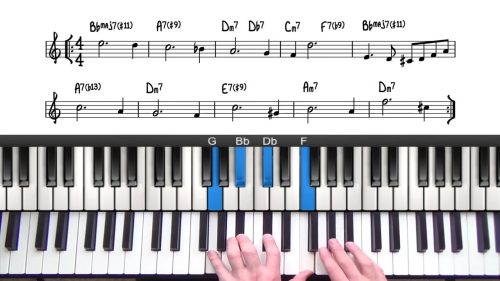Triplets and Swing 8th Notes Tutorial
In this lesson we will take our study of chord tone soloing a step further by incorporating triplets and swing 8th notes.
Check out the detailed lesson on swing feel if you have not watched that already. It contains lots of information that will complement what we are about to cover in this lesson.
We will cover some of the same principles that we cover in that lesson, but not in as much detail, so if swing rhythm is new to you, definitely check out that lesson first.
We explore a number of exercises exercises so that you understand how to incorporate triplets and swing 8th notes into your lines. We are going to play exclusively with chord tones again to help you visualise these important components of your improvised lines.
If you do play a non-chord tone by mistake, then don’t stop playing, just move back to the closest chord tone on the next beat. Always try to keep playing when improvising.
Lesson Downloads
-
12 Bar Blues Lesson Supplement File Type: pdf
-
“Straight No Chaser” – Jazz Blues Form File Type: pdf
Practice Tips
-
When improvising, never stop playing if you make a mistake... this is the worst thing you can possibly do. Just continue, unfazed, & chances are it will still sound great, and if you do have an audience, they will be none the wiser.
- If you stop, however, it's obvious to the audience that something is wrong and it will also make your playing sound disjointed.








I am not able to follow the melody part..are we playing some scale??
– Shantanu
Hey Shantanu, for the improvised melody, I am just playing the primary chord tones of each chord.
This is 1-3-5-7
So for all the F7, we can choose from the notes F-A-C-Eb
For all the Bb7, we can choose from the notes Bb, D, F, Ab
For the C-7, we can choose from the notes C-Eb-G-Bb
etc….
This is called ‘chord tone’ soloing. It is strongly advisable that you practice learning to improvise with the chords tones. That way, you are playing directly within the harmony. Once you are comfortable moving between the chord tones, you can start to add approach patterns, enclosures, passing notes, etc…
But first start with just the chord tones.
I hope this helps and if you have any further questions just let me know.
Cheers,
Hayden
How i can visualize the guide tones quicker?I get a little bit stuck doing the maths lol…for exemple..my brain goes like 7th of F7 is Eb so the next chord is Bb7 and the 3th of Bb7 is D…so i will slip down from Eb to D…. . .. It takes 3 to 4 secs until i get the answer and it slows down my improvisation.
Great lesson as always Hayden! Love seeing everything come together. Most of these exercises, including the basic ones, have been oddly tedious for me and taken a while to get right but getting better nonetheless.
For these exercises, should we play the chord tones in the exact order you did before playing them in what ever order we want or just play it our way from the get go? Once I get the chord tones down it gets harder to just memorize an already established set of notes versus just play chord tones in an improvised fashion. Thanks in advance!
Hi Hayden, Where can I find the detailed lesson on swing feel referenced in this lesson, please?
I’ve played a lot of swing on melodica, but not on piano, so I’m starting from scratch. Any suggestions you may have are welcome.
Thanks, Karen
Hi Karen,
Please check out this recent seminar which goes into detail on swing rhythm:
pianogroove.com/live-seminars/how-to-swing-zoom-workshop/
In this seminar Tuomo provides examples of recordings, and gives lots of advice, guidance, and background information during the 1 hour session.
I’d recommend to start there and if you have any questions you can post them on the seminar page.
Talk soon,
Hayden